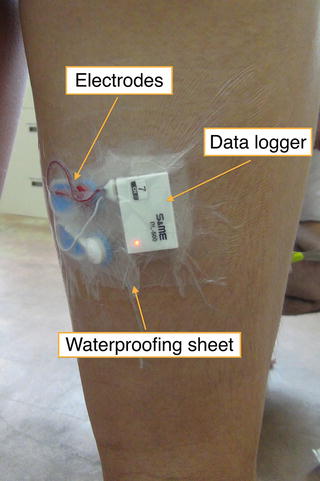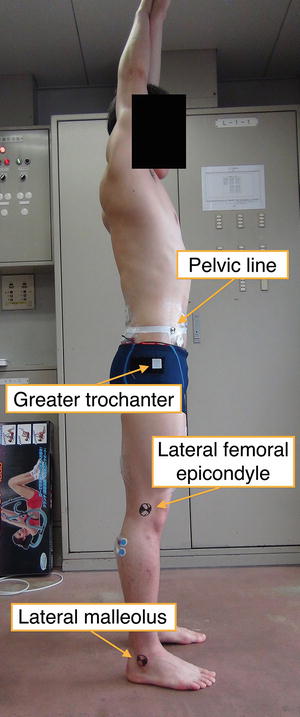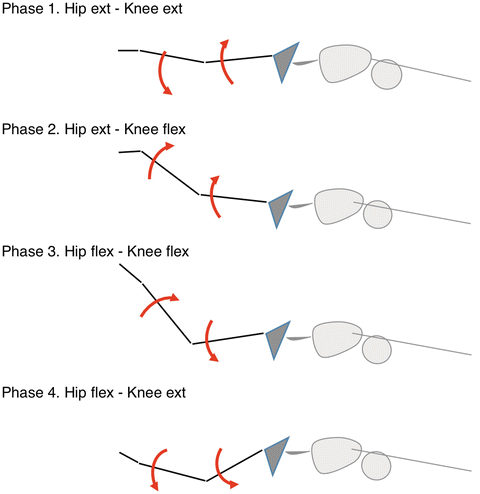Fig. 24.1
Anterior (a) and posterior (b) views of electrode placement. BF biceps femoris, ES erector spinea, GC gastrocnemius, GM gluteus medius, IO internal oblique, RA rectus abdominis, RF rectus femoris, and VM vastus medialis

Fig. 24.2
Waterproofing process for the electrode and data logger
The aquatic exercise was recorded from the right hand side with a single waterproof high-speed camera (200 Hz HAS-220; DITECT). Body surface markers were placed on the pelvic line joining the superior anterior iliac spine and superior posterior iliac spine as well as the right greater trochanter, lateral femoral epicondyle, and lateral malleolus (Fig. 24.3). Subjects did one performance of the flutter kick with maximum effort in a 25-m indoor swimming pool. For analysis, the hip angle (i.e., the angle formed by the line joining the greater trochanter to the femoral lateral epicondyle and the pelvic line) and knee angle (i.e., the angle formed by the greater trochanter, femoral lateral epicondyle, and lateral malleolus) during a single kick were calculated from the markers on the subjects’ bodies using image analysis software (Dipp-Motion Pro; DITECT). Kick movements were divided into the following 4 phases on the basis of the behavior of the hip and knee joints (Fig. 24.4).



Fig. 24.3
Right side view of the body surface marker placement

Fig. 24.4
Four phases as derived from hip and knee motion
1.
Hip extension–knee extension
2.




Hip extension–knee flexion
Stay updated, free articles. Join our Telegram channel

Full access? Get Clinical Tree








